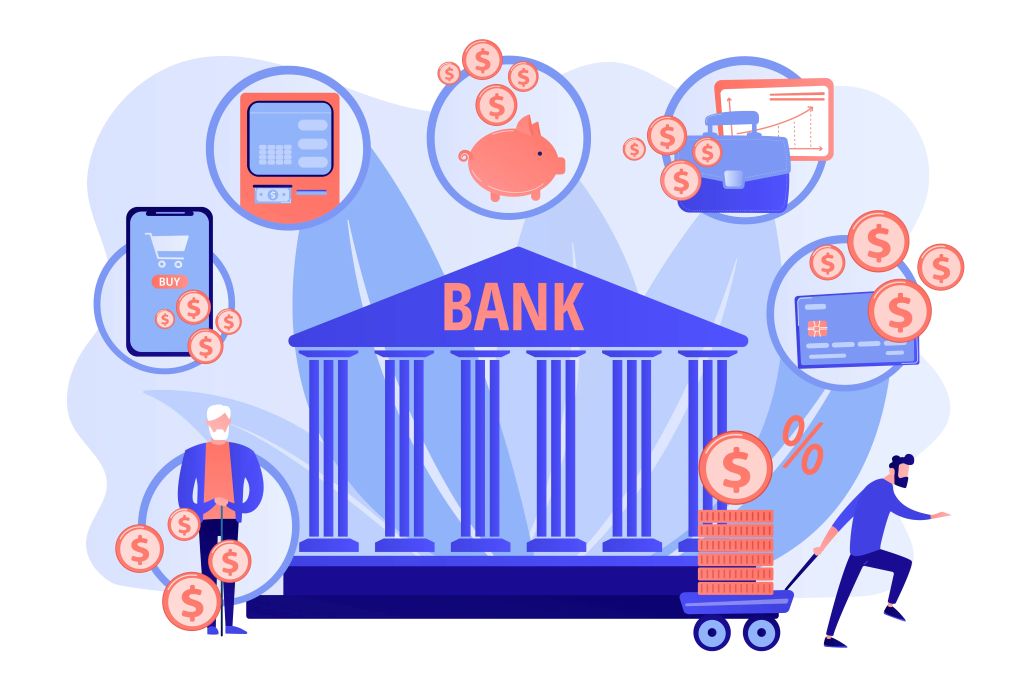
In today’s fast-evolving financial landscape, regulatory compliance for banks is no longer optional—it is a critical strategic imperative. Staying updated with regulatory compliance for banks is crucial as evolving rules shape the foundation of risk and governance. With growing scrutiny from regulators, auditors, and customers, banks must adhere to complex laws, regulations, and ethical standards to maintain operational integrity, manage risks, and safeguard their reputation. Staying ahead in regulatory compliance for banks ensures institutions avoid penalties and protect customer trust.
The banking sector operates in a highly dynamic environment where laws evolve frequently, and regulatory penalties for non-compliance can be severe. From anti-money laundering (AML) to Know Your Customer (KYC) policies, data privacy regulations, and risk management standards, institutions are expected to follow a broad spectrum of requirements. Adhering to banking industry regulatory compliance standards prevents fines and enhances trust. According to Bank for International Settlements, a strong compliance framework is directly linked to the stability of the financial system.
To keep pace with these demands, many banks are adopting technology-driven solutions. Platforms like Calibr Learn offer AI-powered personalized learning paths, enabling staff to stay up-to-date with regulatory changes efficiently. For banks seeking guidance or tools to streamline compliance training, visiting the Calibr website or contacting their team can be an immediate first step.
Understanding Regulatory Compliance for Banks
Regulatory compliance in banking refers to the adherence to laws, regulations, guidelines, and specifications relevant to the banking industry. This encompasses a wide range of areas, including anti-money laundering (AML), Know Your Customer (KYC), data protection, and financial reporting. According to a report by Unit21, banks must adopt a set of standards and practices to remain compliant, ensuring they maintain integrity and trust within the sector. Such practices are part of maintaining banking industry regulatory compliance.
Core Components of Banking Regulatory Compliance

1. Anti-Money Laundering (AML) and Countering the Financing of Terrorism (CFT)
AML and CFT regulations are designed to detect and prevent illicit financial activities. Banks are required to implement robust monitoring systems, conduct due diligence, and report suspicious activities. A survey by BPI found that the portion of bank IT budgets devoted to compliance grew by 40% from 2016 to 2023, highlighting the increasing importance of AML and CFT measures.
2. Know Your Customer (KYC) Procedures
KYC regulations mandate banks to verify the identity of their clients to prevent identity theft, fraud, and money laundering. This involves collecting and verifying personal information, understanding the nature of the customer's activities, and assessing potential risks associated with the customer. Platforms like Calibr Craft can assist banks in developing customized training materials to educate staff on KYC procedures.
3. Data Protection and Privacy Laws
With the increasing digitization of banking services, safeguarding customer data has become paramount. Banks must comply with data protection regulations such as the General Data Protection Regulation (GDPR) in the EU and similar laws in other jurisdictions to ensure the privacy and security of customer information. According to OnCourse Learning, regulatory bodies are putting greater pressure on institutions to protect consumer data from breaches, unauthorized access, and misuse.
4. Financial Reporting and Transparency
Regulatory bodies require banks to maintain accurate and timely financial records. This includes adhering to accounting standards, conducting audits, and providing transparent reporting to stakeholders. Such practices promote accountability and trust in the financial system. A report by Deloitte indicates that even with potential deregulatory efforts, banks should prioritize governance, risk management, and compliance to manage uncertainties and remain competitive.
5. Risk Management and Internal Controls
Effective risk management frameworks are essential for identifying, assessing, and mitigating potential risks. Banks must establish internal controls to monitor compliance, detect irregularities, and ensure adherence to regulatory requirements. Perficient emphasizes the importance of leveraging industry expertise to empower risk management, regulatory reporting, and compliance to safeguard reputation and customer trust.
Challenges in Regulatory Compliance
Maintaining regulatory compliance is a constant challenge for banks due to several factors:
Rapidly Evolving Regulations
Laws and regulatory expectations continuously change. Banks must keep track of amendments, new mandates, and emerging international standards. Failure to adapt can result in penalties or reputational damage. A report by Euvic IT highlights that compliance requirements have become increasingly complex, forcing banks to dedicate significant resources to stay updated.Resource Intensity
Compliance programs require substantial human and financial resources. Banks often need specialized teams, continuous staff training, and dedicated IT infrastructure. According to BPI, the portion of bank IT budgets devoted to compliance has grown steadily in recent years, reflecting the resource-intensive nature of regulatory adherence.Technological Integration Challenges
While automation and AI tools simplify compliance monitoring, integrating these technologies into existing systems can be challenging. Banks must ensure compatibility, data security, and ongoing system maintenance.Global Compliance Complexity
International banks operate under multiple regulatory frameworks across jurisdictions, each with unique requirements. Multi-jurisdictional operations complicate banking industry regulatory compliance, requiring advanced monitoring. Managing these diverse mandates simultaneously adds layers of complexity and risk.Data Protection and Cybersecurity Risks
With digital banking growth, protecting customer data is critical. Banks must implement robust cybersecurity measures alongside compliance practices. As OnCourse Learning notes, breaches not only invite regulatory scrutiny but also erode customer trust.
Despite these challenges, addressing them proactively ensures smoother operations, reduces regulatory risk, and strengthens customer confidence. Proactive measures are essential for maintaining regulatory compliance for banks, especially as global rules evolve.
The Role of Bank Regulatory Compliance Services
Many banks partner with specialized bank regulatory compliance services to navigate the increasingly complex landscape. Such partnerships streamline banking regulatory compliance and reduce operational burdens. These services provide expert guidance, tools, and training programs designed to keep banks compliant efficiently and effectively.
Key offerings include:
Regulatory Advisory: Guidance on interpreting complex regulations, understanding local and international requirements, and implementing best practices.
Compliance Audits: Independent reviews of existing compliance frameworks to identify gaps, mitigate risks, and ensure alignment with evolving regulations. For example, PwC offers extensive advisory and audit services for banking institutions worldwide.
Training and Development: Structured programs to educate employees on compliance protocols. Platforms like Calibr Craft can help create customized, interactive training content to engage staff and improve knowledge retention.
Technology Solutions: Implementation of monitoring tools, dashboards, and reporting systems to automate compliance tracking.
Continuous Support: Many providers offer ongoing guidance to keep banks updated on regulatory changes, ensuring that compliance frameworks evolve proactively rather than reactively.
Engaging professional compliance services enables banks to focus on core operations while maintaining high standards of regulatory adherence. Banks can also enhance employee understanding through platforms like Calibr Content Hub, which centralizes learning resources for easy access.
Implementing a Robust Compliance Program

A robust compliance program is more than just following rules—it’s about creating a structured, proactive approach to ensure regulatory adherence, minimize risks, and foster a culture of accountability across the organization. This framework strengthens banking regulatory compliance and aligns teams with evolving standards. Organizations often begin with a banking regulatory compliance checklist to ensure no requirements are overlooked. Successful implementation involves three key pillars: culture, technology, and continuous monitoring.
Establishing a Compliance Culture
A strong compliance culture starts from the top leadership. When executives demonstrate a commitment to regulatory adherence, it sets the tone for the entire organization, influencing employee behavior and decision-making. Key elements of fostering a compliance culture include:
Leadership Commitment: Executives should model ethical behavior and actively communicate the importance of compliance.
Regular Training: Continuous education ensures employees understand regulatory obligations and internal policies. Platforms like Calibr Content Hub provide centralized learning resources, allowing employees to access updated policies, best practices, and compliance courses anytime.
Clear Policies and Zero-Tolerance Approach: Employees must know what is expected and the consequences of non-compliance. Clear, well-communicated policies reduce confusion and strengthen accountability.
A strong culture ensures that compliance is not treated as a checkbox exercise but becomes an integral part of daily operations.
Utilizing Technology for Compliance Monitoring
Technology plays a pivotal role in modern compliance programs by enhancing efficiency and accuracy. Automated systems can:
Monitor transactions in real-time to detect unusual or suspicious activity.
Generate reports automatically for regulators, ensuring timely and accurate disclosure.
Reduce human error and free up staff to focus on higher-level compliance strategy.
By leveraging data intelligence and automation, banks can monitor sensitive information, detect regulatory breaches early, and maintain compliance even in complex, multi-jurisdictional environments.
Moreover, combining technology with learning platforms like Calibr Learn allows employees to receive targeted, AI-driven training based on their roles and observed compliance behavior. This ensures that human oversight complements technological monitoring, creating a more resilient compliance framework.
Regular Audits and Assessments
Even with strong culture and advanced technology, continuous evaluation is critical to a robust compliance program. Regular audits—both internal and external—help organizations:
Identify gaps or weaknesses in policies, procedures, or systems.
Ensure adherence to evolving regulations and international standards.
Measure the effectiveness of training programs and employee compliance.
Continuous assessment also includes feedback loops where audit findings inform updates to training content, technology workflows, and organizational policies. This ensures that compliance programs evolve with regulatory changes, operational risks, and business growth.
How Calibr Helps
Imagine a mid-sized bank, "SecureBank," operating in a highly regulated market. Faced with increasing regulatory demands and resource constraints, SecureBank seeks a solution to streamline its compliance training and monitoring processes.
Step 1: Identifying the Need
SecureBank recognizes the need for a comprehensive compliance training program to ensure all employees are well-versed in current regulations and internal policies.
Step 2: Implementing Calibr's Solutions
SecureBank partners with Calibr Learn to develop a personalized learning platform tailored to their compliance requirements. Using trusted bank regulatory compliance services like Calibr ensures staff are trained efficiently and consistently. The platform offers AI-powered course authoring, collaborative learning, and real-time analytics to track employee progress.
Step 3: Continuous Monitoring and Improvement
Utilizing Calibr Craft, SecureBank creates and manages content related to compliance procedures, ensuring that all materials are up-to-date and accessible. The Calibr Content Hub serves as a centralized repository for learning resources, fostering a culture of continuous improvement.
For banks looking to strengthen compliance frameworks and reduce operational risk, visit our website or contact the team today to explore AI-driven learning and compliance solutions.
Bringing it all together
Regulatory compliance in banking is a strategic imperative that safeguards operational integrity, mitigates risk, and strengthens customer trust. AI-powered platforms support regulatory compliance for banks, helping teams monitor, learn, and act efficiently. Banks that adopt structured compliance frameworks, leverage technology, and invest in employee training can navigate complex regulations effectively.
By implementing AI-powered solutions like Calibr Learn, banks can:
Deliver personalized compliance training that adapts to employee learning needs.
Streamline content creation using Calibr Craft, ensuring up-to-date and engaging training materials.
Centralize knowledge management with Calibr Content Hub, allowing employees to access critical compliance resources anytime.
Investing in such solutions not only ensures adherence to regulations but also promotes a culture of continuous learning, improves operational efficiency, and minimizes compliance-related risks.
Start improving regulatory compliance for banks today with intelligent learning and monitoring tools. To modernize your bank’s compliance program:
Sign up for a 14-day free trial to experience AI-powered compliance learning.
Schedule a demo to see the platform in action.
Explore the Calibr website to learn more about AI-driven training solutions.
Embracing technology, professional guidance, and structured learning programs ensures your bank remains compliant, resilient, and ready for future challenges.


